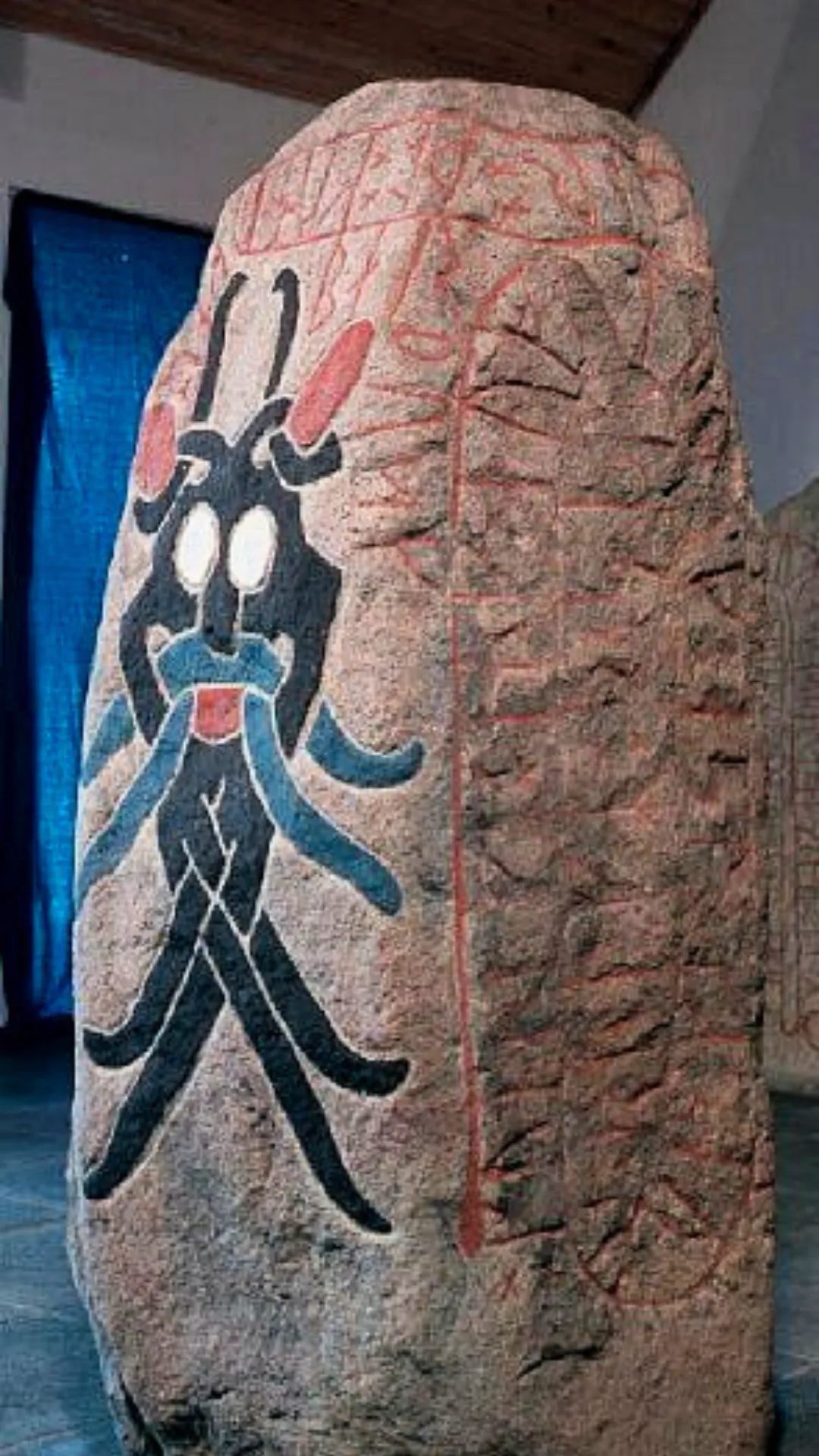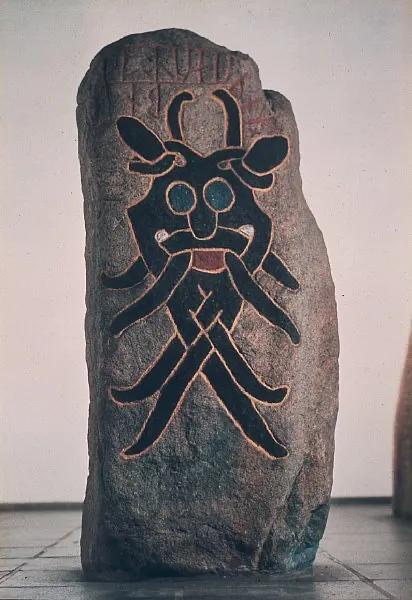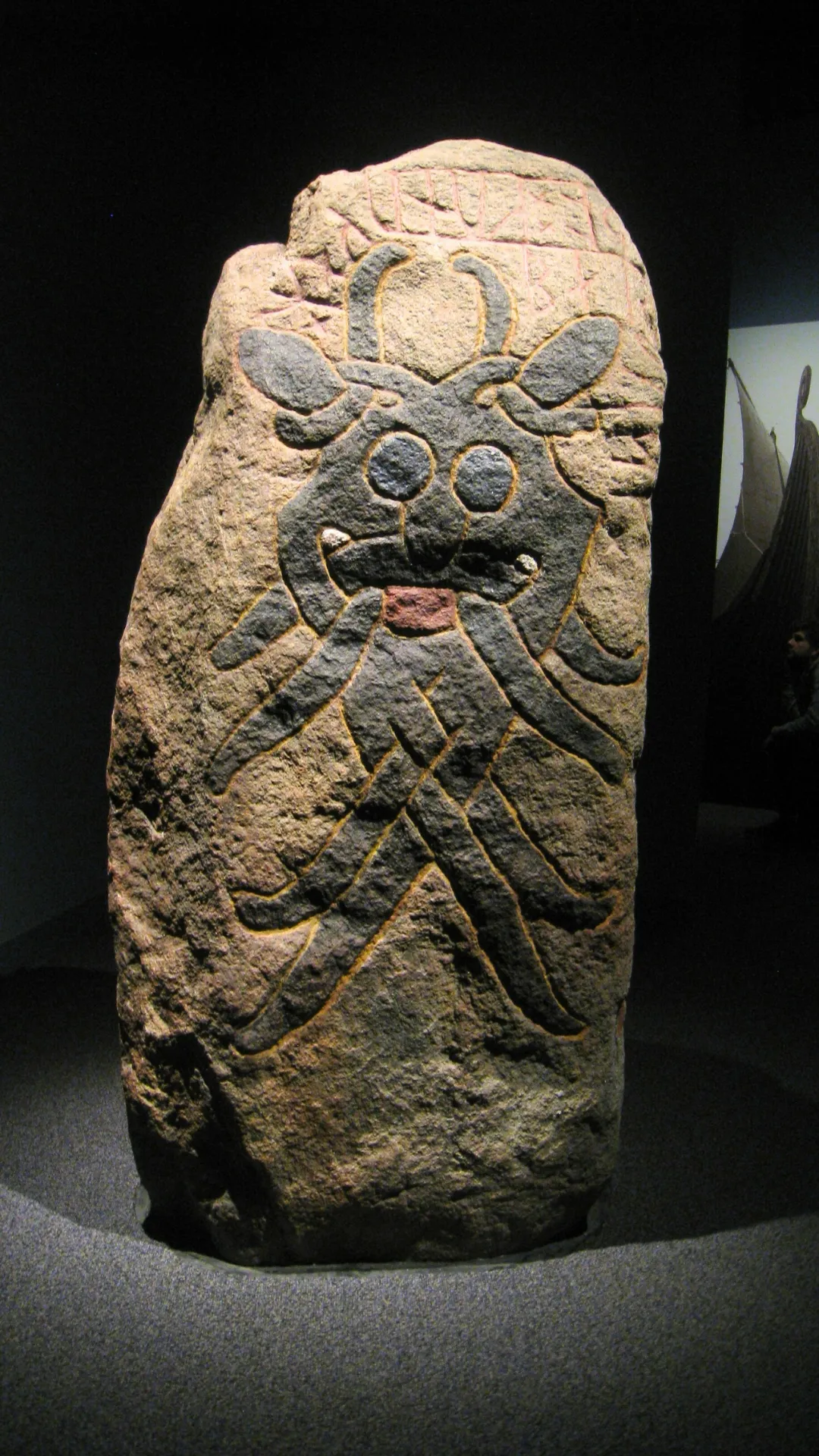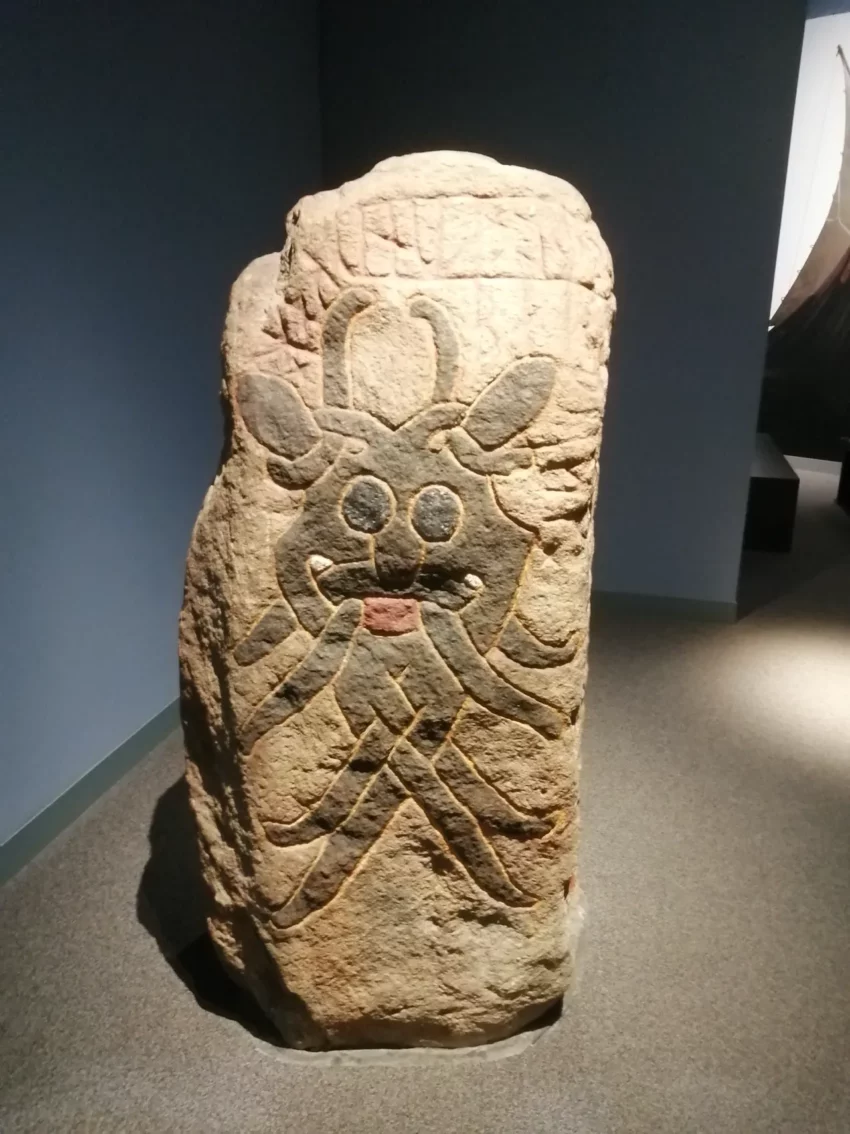The Mask Stone (DR 66): A Viking Memorial with a Mysterious Battle
The Mask Stone, officially known as Danish Runic Inscription 66 (DR 66), is a fascinating Viking Age runestone discovered in Aarhus, Denmark. Carved from granite, this ancient memorial is most notable for its depiction of a facial mask, a motif thought to ward off evil spirits. It also commemorates a man who died in battle, though the specifics of this conflict remain uncertain.
Get your dose of History via Email
Discovery and Historical Context
The Mask Stone was found in 1850 under Aarhus Mill, now the site of Mølleparken (“The Mill Park”). Its original location was likely along an important road leading into Aarhus from the west. This road was a significant route for travelers and traders, making it a fitting place for a memorial stone to be displayed. The runestone is now part of the collection at the Moesgård Museum, which even adopted the mask motif for its logo—a testament to the stone’s cultural significance.
The stone dates back to the Viking Age, a time of complex social structures, maritime expansion, and frequent battles. The runic inscription and the carved mask connect the stone to the broader tradition of Viking memorials, which often served as tributes to fallen warriors.
The Runic Inscription: A Battle Between Kings
The Mask Stone’s inscription mentions a battle between kings, a typical theme in Viking-era runestones. However, the exact battle referred to is unclear. Two key historical events have been proposed as possibilities: the Battle of Svolder (circa 1000) and the Battle of Helgeå (1026). Both battles were major conflicts involving Scandinavian rulers, and either could have provided the backdrop for the memorialization of the man named Fúl, who the stone honors.
Though no solid evidence links the inscription to one specific battle, the mention of a conflict between kings speaks to the importance of warfare and loyalty in Viking society. Battles were not just about territorial control; they were also occasions where warriors gained honor and recognition, especially if they fought for a king.

The Mask: Protection Against Evil Spirits?
What sets this runestone apart from many others is the depiction of a facial mask. Masks were a common motif in Viking art and are believed to have had symbolic meaning. According to the Moesgård Museum, the mask on the Mask Stone was “probably intended to be protection against evil spirits.” This belief in protective symbols aligns with the spiritual practices of the Viking Age, where warriors and their families sought ways to ensure safe passage to the afterlife.
The mask motif appears on several other runestones across Scandinavia, such as DR 62 in Sjelle and DR 314 in Lund, indicating a shared cultural significance. While the exact meaning of these masks is still debated, they are often associated with protection and rituals, perhaps serving as guardians for the souls of the departed.

The Félag: A Viking Partnership
The runic inscription reveals that the stone was raised by four men in memory of Fúl. The relationship between these men is described using the term félag, which refers to a joint financial venture or partnership during the Viking Age. Félags were common in Viking society and often involved business arrangements, such as trade expeditions or land ownership.
Runestones mentioning félag can be found across Scandinavia, including Sö 292 in Bröta and DR 279 in Sjörup. This term indicates that the men who raised the Mask Stone were not only comrades in battle but also business partners, reflecting the dual nature of Viking society where economic and military interests were often intertwined.
A Cultural Symbol
Though the Mask Stone may seem like a simple memorial, it is rich with cultural meaning. The mention of kings, the depiction of a protective mask, and the reference to a félag all point to a world where warfare, spirituality, and economics were deeply connected. The fact that similar motifs and inscriptions are found on other runestones across Scandinavia suggests that these ideas were widespread during the Viking Age.
Today, the Mask Stone remains an important artifact, offering a glimpse into the values and beliefs of the Vikings. While much about the battle it commemorates remains a mystery, the stone’s detailed inscription and mask design continue to capture the imagination of historians and visitors alike.

Conclusion: A Memorial to a Fallen Warrior
The Mask Stone stands as a testament to the Viking practice of memorializing the dead, particularly those who died in battle. Its mysterious reference to a battle between kings and the haunting image of the facial mask make it a unique and culturally significant artifact. Although the full story of Fúl and the battle he fought in may never be known, the stone remains a powerful symbol of Viking society’s reverence for warriors and their complex relationship with death, honor, and the supernatural.
Sources:

